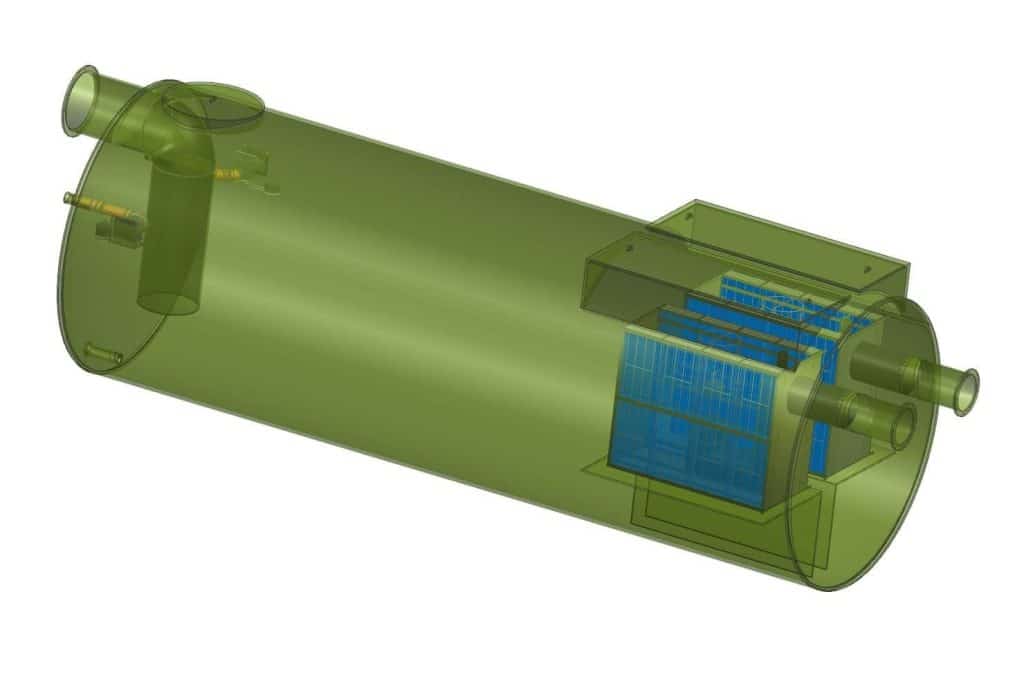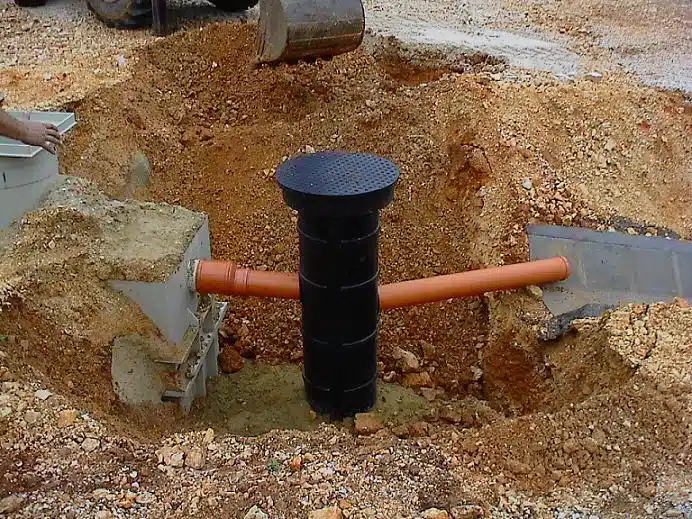Did you know that beneath North Carolina’s surface, there’s a key defense against water pollution? North Carolina Below Ground Oil Water Separators are crucial for our environment. They work hard to keep our water clean and meet important standards.
Freytech Inc. is a leader in providing top-quality below ground oil water separators for North Carolina. These systems go beyond API 421 standards, removing almost all oil droplets. They use advanced technology to separate oil with a 5 PPM efficiency, and can even get down to 0.1 PPM for emulsified oil.
These separators can handle many types of oil, like motor oil, diesel, gasoline, and jet fuel. They make sure the water meets strict limits of 10 Parts per Million. This helps with both environmental rules and efficient wastewater treatment.
Key Takeaways
- Below ground oil water separators are key for protecting the environment
- Freytech Inc. offers top-notch separators that go beyond API 421 standards
- Advanced technology helps separate oil with a 5 PPM efficiency
- These systems can manage various oils, from motor to jet fuel
- They meet North American discharge limits of 10 PPM
- They help with stormwater management and wastewater treatment
Understanding Below Ground Oil Water Separators in North Carolina
North Carolina is serious about keeping our water clean. Underground oil/water separators are a big part of this effort. They remove oil from wastewater before it can harm our waterways.
What Are Oil Water Separators?
Oil water separators are tanks that use gravity to separate oil and water. They’re often placed underground near industrial areas or parking lots. When wastewater goes through, the oil rises to the top and clean water comes out the bottom. This is key for handling industrial waste and stopping spills.
North Carolina’s Rules for Separators
In North Carolina, businesses must follow strict rules for these separators. They need regular checks and upkeep to work right. This helps stop oil spills and protects our water sources.
Benefits for the Environment
These separators are great for the environment. They keep oil out of rivers and lakes through storm drains or catch basins. By catching pollutants, they help keep our water safe for wildlife and people. They’re a key part of North Carolina’s plan to protect its natural resources.
Design and Construction of Underground Oil Water Separators
Underground oil water separators are key to protecting the environment. They efficiently separate oil from water, making sure the water is clean.
Single Wall vs. Double Wall Construction
Oil water separators have single and double wall designs. Single wall units are more affordable for places with low environmental risk. Double wall separators provide extra leak protection, perfect for sensitive areas.
Key Components
An oil water separator has three main parts: the inlet compartment, separation chamber, and clean water outlet. The inlet takes in wastewater and starts the oil removal process. The separation chamber uses gravity to separate oil from water. The clean water outlet sends out the treated water.
Coalescing Media and Separation Efficiency
Modern separators use parallel corrugated plates as coalescing media. These plates help small oil droplets merge into larger ones, making separation easier. This technology boosts efficiency, removing oil droplets as small as 20 microns. The treated water has oil content of 5 parts per million or less, meeting strict environmental standards.
The design of underground oil water separators aims for effective oil-water separation and sediment removal. By using advanced technologies like parallel corrugated plates and gravity displacement, these systems ensure high-quality water treatment for various industries.
North Carolina Below Ground Oil Water Separators: Performance and Specifications
Underground oil water separators are key in treating wastewater and handling industrial waste. They meet strict rules and efficiently separate oil from water.

In North Carolina, these separators perform well. They can handle flows from 35 to 400 gallons per minute. They can also hold from 350 to 4000 gallons, making them versatile for different industrial wastewater needs.
They are made from carbon steel that meets ASTM A36 standards. The welding follows AWS D1.1 specs for a secure tank. This ensures they last long in tough industrial settings.
These separators have important features. They have flat face flanges, easy-access manways, and lifting lugs for easy setup. Inside, they use advanced coalescing media to remove 99.9% of free oil droplets at the maximum flow.
The system keeps a smooth flow to stop oils from mixing back with water. This ensures top-notch wastewater treatment that follows or beats the rules.
Installation and Maintenance of Below Ground Oil Water Separators
Installing and keeping below ground oil water separators in good shape is key for managing stormwater and following environmental laws. These systems are important for stopping spills and protecting our water sources.
Proper Installation Procedures
Installing these separators needs to be done with care. The process includes handling them carefully to prevent damage to the protective coating. Making sure they are level is also important for them to work right. After they’re in place, a test for leaks is done to make sure everything is okay.
Regular Maintenance and Inspection Requirements
Keeping these separators working well means regular checks and following certain rules. This includes looking at them often, getting rid of waste properly, and sticking to the right procedures. It’s also important to train people on how to use and maintain them correctly. This helps with following environmental laws and keeps them running well for a long time.
Troubleshooting Common Issues
Leaks are a big issue that can cause big problems. If not fixed quickly, a leaking separator might be seen as a Solid Waste Management Unit. This means you have to take steps to fix it under environmental laws. Regular checks can spot problems early, avoid expensive fixes, and make sure you’re following stormwater management rules.
These separators are crucial in storm water systems. They process runoff to meet the US EPA’s Clean Water Act standards. With effective oily water treatment, facilities protect the environment and dodge big fines.
Conclusion
North Carolina Below Ground Oil Water Separators are key to managing stormwater effectively. They help keep the state in line with environmental laws. By keeping oil and water apart, they protect our waterways and the life in them.
These separators need to be made with care. There are single wall and double wall types, each with its own advantages. Important parts like inlet compartments and separation chambers make sure they work well. Coalescing media also helps in making the water cleaner.
Putting these separators in the right place and keeping them up is crucial for their success. Following North Carolina’s rules helps businesses and cities protect our water. By choosing quality separators and doing things right, companies can help the environment and meet their goals.
As we keep working on managing stormwater, North Carolina Below Ground Oil Water Separators will keep playing a big role. They are a key part of keeping our water clean. This helps the state work towards a cleaner, healthier future.









